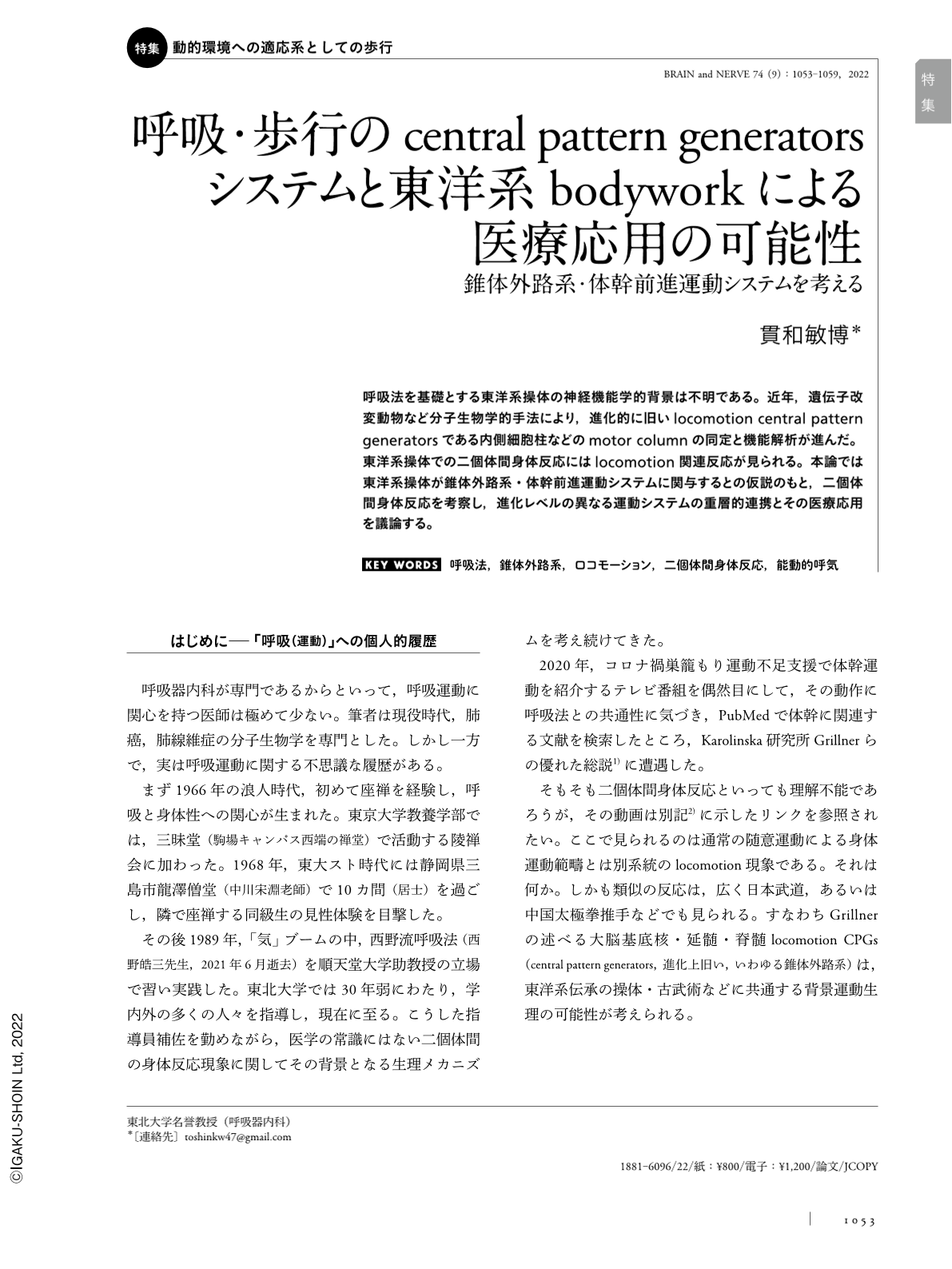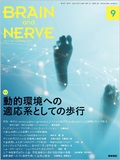Japanese
English
- 有料閲覧
- Abstract 文献概要
- 1ページ目 Look Inside
- 参考文献 Reference
呼吸法を基礎とする東洋系操体の神経機能学的背景は不明である。近年,遺伝子改変動物など分子生物学的手法により,進化的に旧いlocomotion central pattern generatorsである内側細胞柱などのmotor columnの同定と機能解析が進んだ。東洋系操体での二個体間身体反応にはlocomotion関連反応が見られる。本論では東洋系操体が錐体外路系・体幹前進運動システムに関与するとの仮説のもと,二個体間身体反応を考察し,進化レベルの異なる運動システムの重層的連携とその医療応用を議論する。
Abstract
The neurophysiological background of oriental bodywork based on breathing methods is poorly understood. Recently, experimental techniques using genetically engineered animals have been applied to identify and analyze the functions of motor columns such as medial motor column (MMC), known as evolutionarily old locomotion central pattern generators (CPGs) in lamprey. In oriental bodywork between two individuals, locomotion-related body reactions are often observed. In Nishino Breathing Methods (NBM), the extrapyramidal system is likely to be accessed through the practice of Sokushin-kokyu (whole body awareness with breathing), Karin (body axis rotation and reactivation with breathing), and Taiki (body trunk mutual signaling with breathing; the coordination of two individual body trunks). In addition, kinesiological discussions of ancient oriental traditions, such as the practice of mysterious hand-back contact and the active expiration that relates to music and body trunk reaction, are presented. Based on the hypothesis that oriental bodywork is accessing the extrapyramidal body trunk motor system (basal ganglia to spiral locomotion CPGs), this paper discusses the inter-individual body reactions coexisting through different evolutionary levels in multilayered motor systems, and their possible medical applications.

Copyright © 2022, Igaku-Shoin Ltd. All rights reserved.


